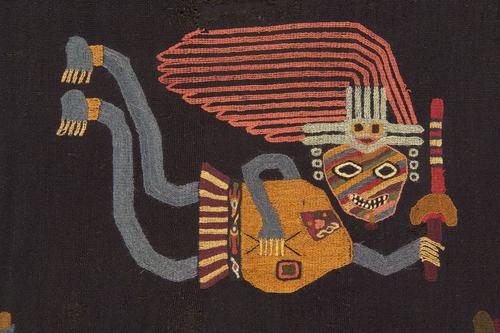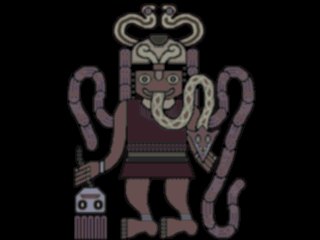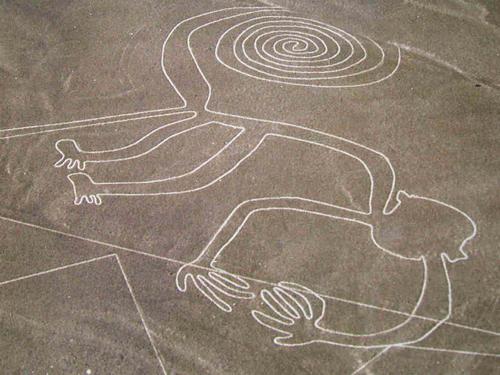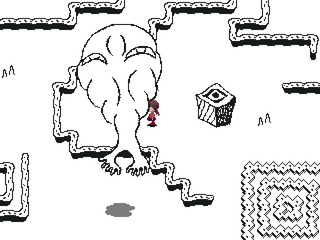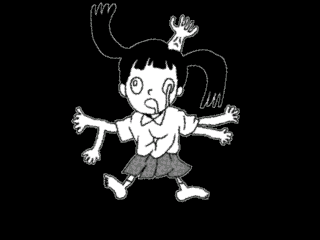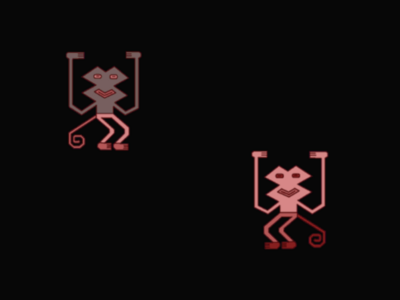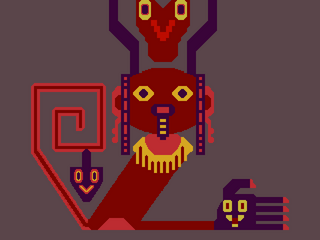
One of the most noteworthy visual themes in Yume Nikki is that of Mesoamerican imagery, as shown by multiple examples in the various worlds. While it is up to speculation as to whether or not these cultures are displayed so prominently alongside Japanese culture have any significance, there exist many theories as to how this could relate to the characters and the overarching message of the game.
A few fan-names for characters have come from how notable this style is in some characters, with some prominent examples being the Aztec Rave Monkey (which appears many times in backgrounds and its own event), and the KALIMBA that appear in Madotsuki's Room, which even has these designs on her carpet. In the same room, there is the NASU minigame, which also contains evidence that even in the real world, these symbols have significance.
In-game examples
Yume Nikki is often characterized by its very unique imagery that would go on to the inspire that art of many other popular indie games, which come from notable characters such as Uboa. The overall aesthetic of the game, however, has just as much, if not more, influence over the game's overarching themes than the characters themselves. From the nervousness of Number World's visual themes, to the weird sculptures towards the sides of the Witch's Island, to the uncomfortable monsters of the Footprint Path, the landscapes contain a diverse variety while still maintaining a common ambience.
A trait of the game that similar games have tried to replicate is its reliance on these Mesoamerican styles, that suggest a deeper context behind the overall meaning (if there is one) of Yume Nikki.
Possible inspirations
Paracas culture
While many fans have speculated that these themes are Aztec, it has often been instead suggested that the imagery in Yume Nikki more closely resembles artwork from the ancient Paracas civilization of modern-day southern Peru. This Andean society lived from around 800 BC to 100 BC, and made significant works using textile-art as they had wide knowledge of water management. This art extended to their process for funerals: wrapping up their deceased and offerings in stylized embroidered cloths. Their art style can be seen many times in the game itself.

From the Nexus Number World, After going through the Zippertile, the player is greeted with a small hallway leading up to a character named KyuuKyuu-kun, which contains a similar background to the Nexus. The characters here are far closer to ancient textiles of this group than any other.
In ancient Peruvian cultures such as these, dreams have high significance in that they can be spiritual events that when finished, would cause the person to learn something about themselves. It is possible that these themes were chosen by KIKIYAMA as a way to represent Madotsuki's mind as if she were doing the same as these people did. One example of this is the background in Eyeball World, which presents itself in the form of an ancient 'dream being' holding a head, as this would let the dreamer know that they are in this state. Another notable feature is the snake coming out of its mouth, which is said to be representative of the 'evil' of a person being expelled.
Nazcan culture
Directly proceeding the Paracas were the Nazcans, another ancient Peruvian civilization that shared many similarities in terms of their art and culture. These people lived from around 100 BC to 800 AD in the Ica Region, leading to the Nazca Province being named after them. They made many underground aqueducts that still function today to provide water.
Although the Aztec Rave Monkey is often labeled as such, many have said that the character more closely resembles line drawings made by these notable Nazcan civilizations. Dreams often played a significant role in this culture as well, which further continues the comparisons between these civilizations and a possible greater meaning to the game itself.
African culture
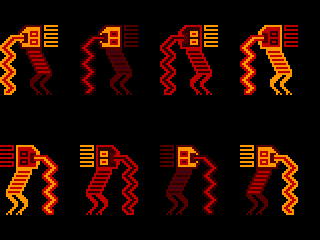
Although to a lesser extent, African themes have also been noted by fans of the game, although these ones are more in the form of the soundtrack.
The sound design of the game is known for its often weird sounds, whether this be in the form of the droning, looping music, or the strange ones that many characters make upon interaction. Among these, it is not uncommon to come across tribal-like beats, such as Takofuusen, who randomly appears across the screen in the White Desert A, accompanied by one of these sounds.
By going into Monoko's tunnel and using the Stoplight effect, Monoko gains a deformed appearance. Interacting with her shows a full-screen event accompanied by a similar, repetitive beat, in one of the most iconic scenes of the game.
Another character that makes a similar noise is the Fisherman, who is found in Windmill World. In YUMENIKKI –DREAM DIARY–, the player obtains a kalimba from one of the Train Passengers after playing a melody on the Flute.
Interpretation
It can be interpreted that Madotsuki herself feels as though she is connected with these cultures and their wide interpretations of dreams, as she has items in the real world that even resemble their art. As mentioned before, the significance of dreams in these ancient civilizations and their beliefs may tell of a deeper context of the game.
Since dreams would often represent sicknesses and the deepest feelings and essence of a person, the ones that Madotsuki faces are not as weird as they are her coming to terms with her own fears. This could be why they are as strange as they are, since what they really represent is a sort of "cleansing" of her mind of these harmful thoughts.
Another theory is that Madotsuki herself is a Japanese Peruvian, explaining both motifs from South American and Japanese culture.


